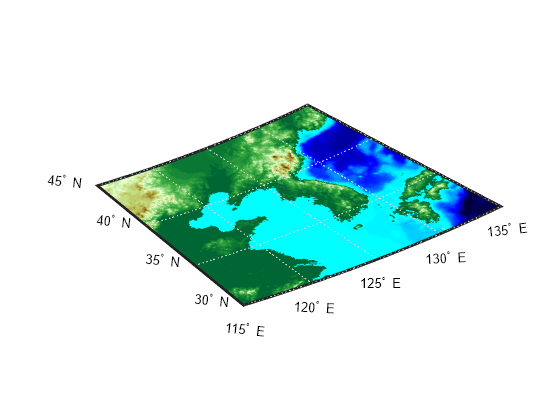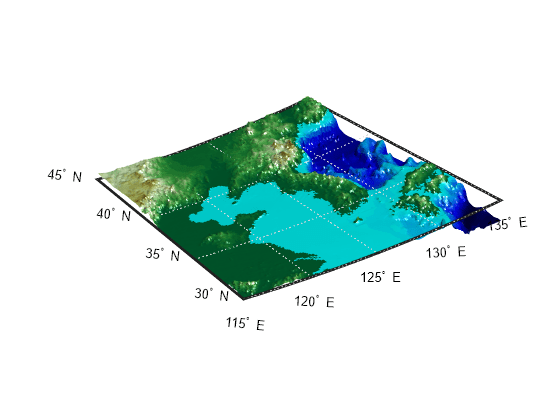daspectm
Control vertical exaggeration of axesm-based map
Syntax
daspectm(zunits)
daspectm(zunits,vfac)
daspectm(zunits,vfac,lat,long)
daspectm(zunits,vfac,lat,long,az)
daspectm(zunits,vfac,lat,long,az,radius)
Description
daspectm(zunits) sets the
'DataAspectRatio' property of the
axesm-based map so that the z-axis is in
proportion to the x-and y-projected
coordinates. This permits elevation data to be displayed without vertical distortion.
The zunits parameter specifies the units of the elevation data, and
can be any length units recognized by unitsratio.
daspectm(zunits,vfac) sets the
'DataAspectRatio' property so that the
z-axis is vertically exaggerated by the factor
vfac. If omitted, the default is no vertical exaggeration.
daspectm(zunits,vfac,lat,long) sets the aspect ratio
based on the local map scale at the specified geographic location. If omitted, the
default is the center of the map limits.
daspectm(zunits,vfac,lat,long,az) also specifies the
direction along which the scale is computed. If omitted, 90 degrees (west) is
assumed.
daspectm(zunits,vfac,lat,long,az,radius) specifies the
radius of the sphere. radius can be one of the values supported by
km2deg, or it can be the (numerical)
radius of the desired sphere in zunits. If omitted, the default
radius of the Earth is used.
Examples
Limitations
The relationship between the vertical and horizontal coordinates holds only as long as the
geoid or scale factor properties of the
axesm-based map remain unchanged. If you change the scaling
between geographic coordinates and projected axes coordinates, execute
daspectm again.
Version History
Introduced before R2006a

